Abstract
1. Single motor units were recorded with highly selective electrodes from intact tibialis anterior muscle in the adult man. A detailed parametric analysis was made of the discharge patterns during voluntary isometric contractions of different peak forces carried out at various rates of force development. 2. During the smooth tracking of a ramp force, the different motor units recorded from a given muscle site were recruited in a consistant order, each unit becoming active when the muscle developed a certain level of force. The threshold of some of the units in such slow ramp contractions exceeded 8 kg. By contrast, in brisk ballistic contractions reaching a peak force of 12 kg in less than 0-15 sec, the same motor units discharged in a transient burst which largely preceded the muscle force production. 3. In slow tracking ramp contractions, the instantaneous frequency of single motor units was initially rather low (5-15/sec) and it increased as the ramp force augmented. By contrast, in (strong) ballistic contractions, the same units discharged at an unusually high instantaneous frequency (60-120/sec) early in the burst and the firing frequency decreased thereafter. Such hitherto unknown pattern appears characteristic of ballistic contractions and it was not found in even fast tracking ramp contractions achieving 12 kg in only 0-4 sec. 4. The potentials of the different motor units activated are rather crowded at intervals of a few msec in the early burst of a strong ballistic contraction and observations on the rank activation of the different motor units do not provide reliable data for the analysis of the recruitment order of units in ballistic contractions. 5. A new method is described for estimating ballistic force threshold of single motor units. When a large series of brisk ballistic contractions with peak forces ranging from 0-05 to 12 kg was carried out any given motor unit only became active when the ballistic peak force exceeded a certain reproducible value. A detailed analysis of the recruitment order based on these ballistic force thresholds showed it to be virtually identical to the recruitment order of the same units in slow tracking ramp contractions (correlation=0-95). 6. Ballistic contractions are graded in force both by the recruitment of additional motor units in stronger contractions, and by an increase in their rate of firing. These gradation mechanisms are discussed.
Full text
PDF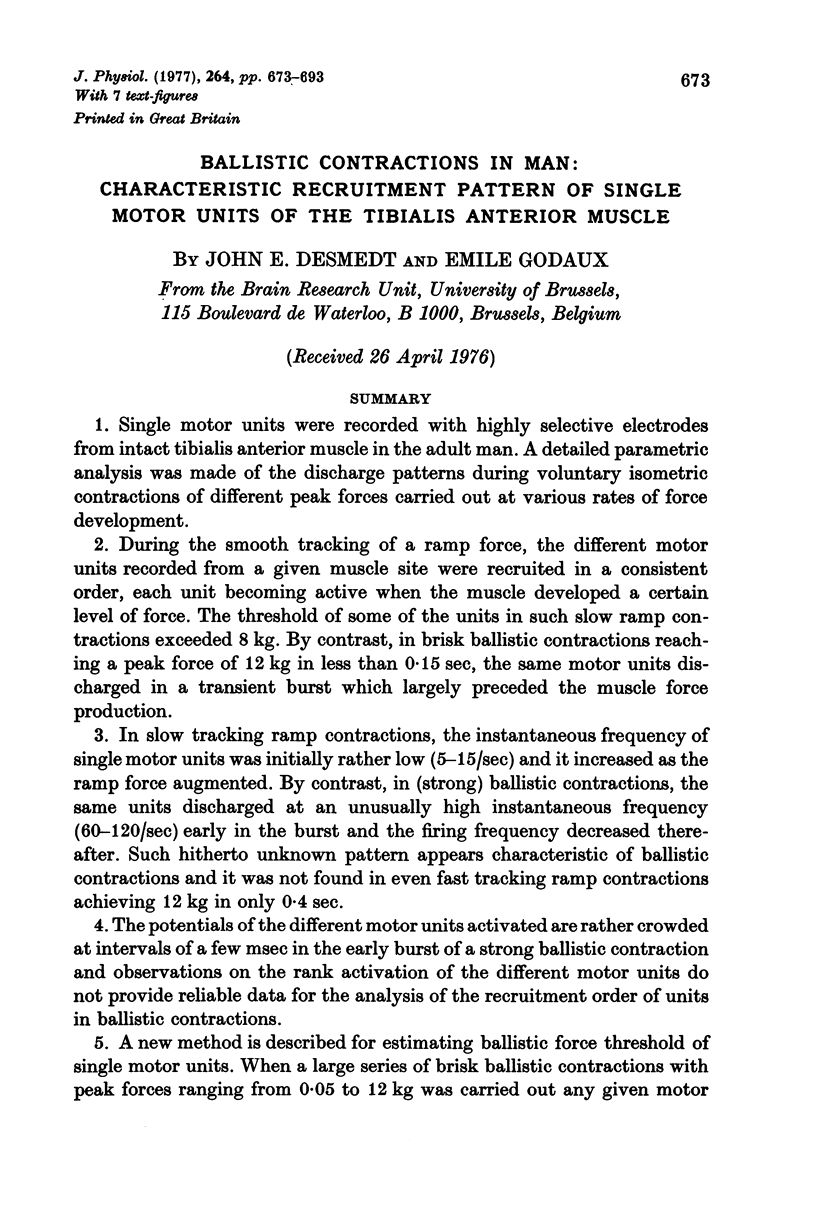
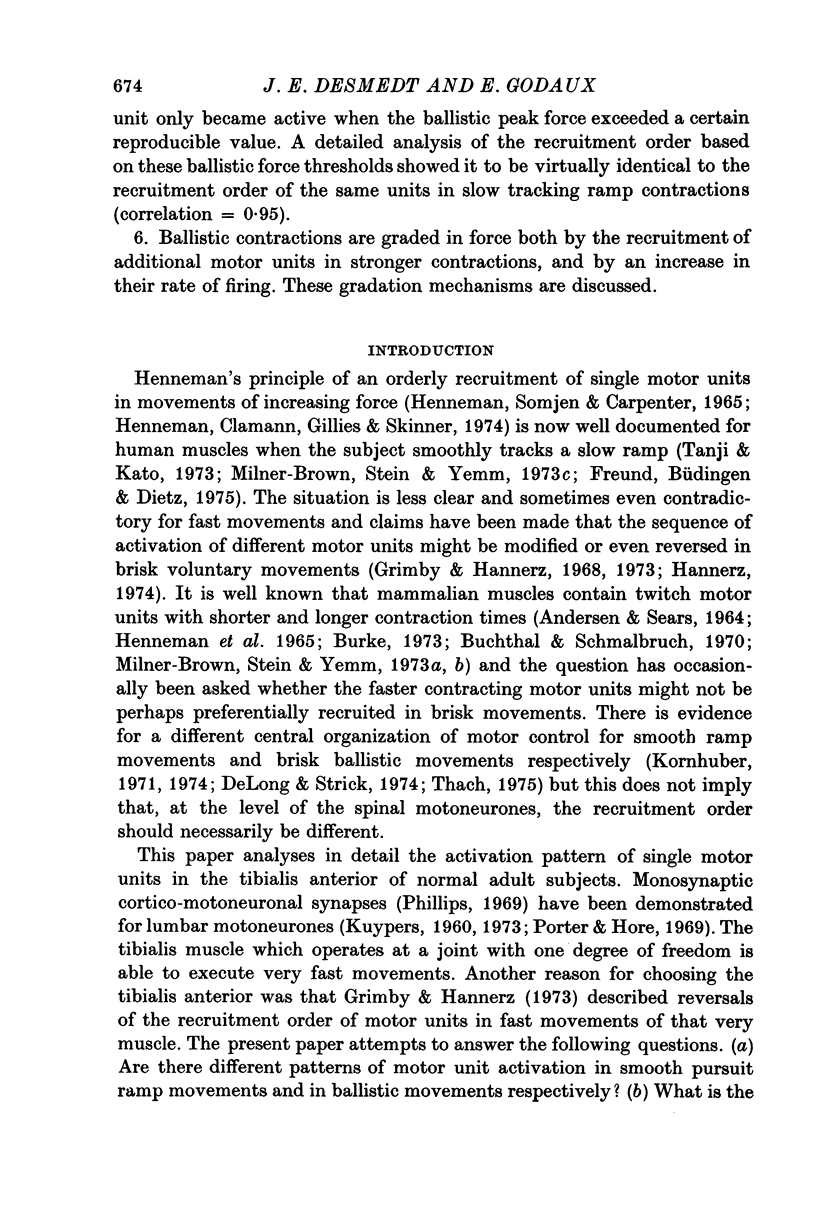
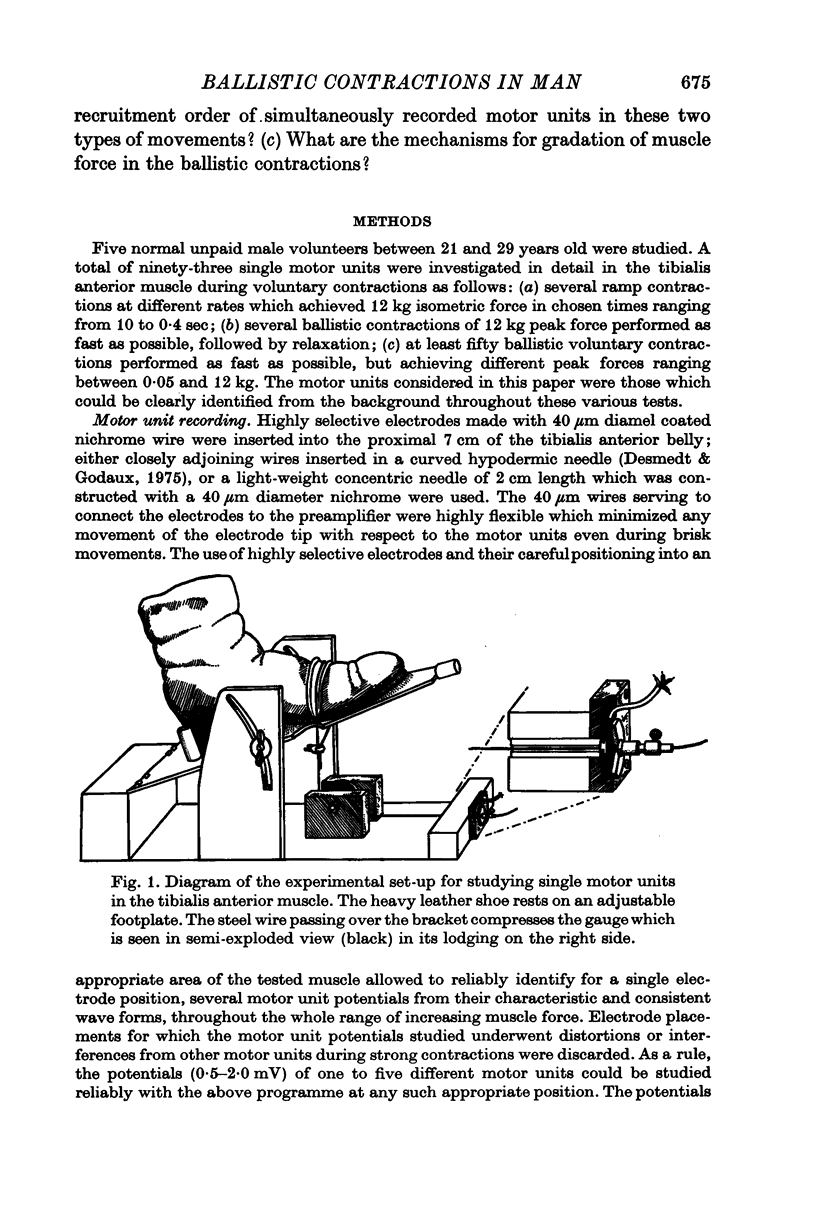
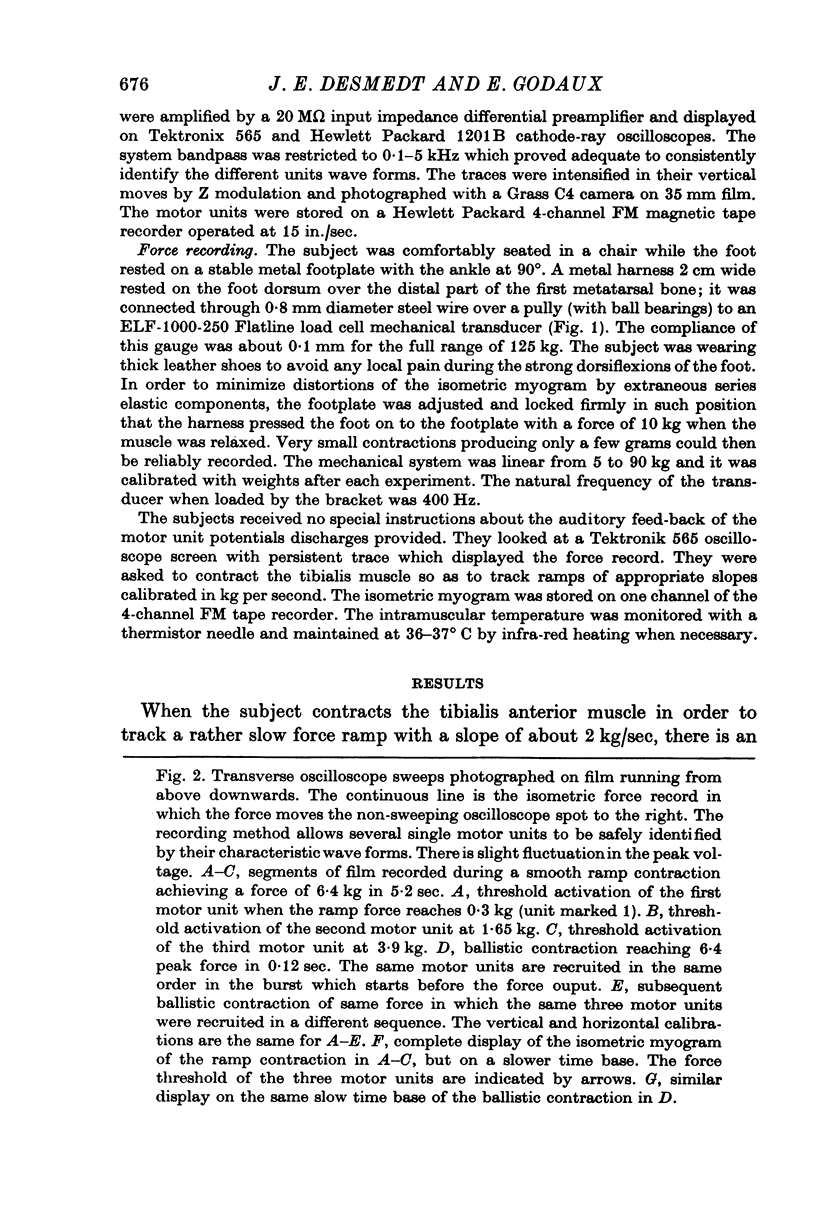
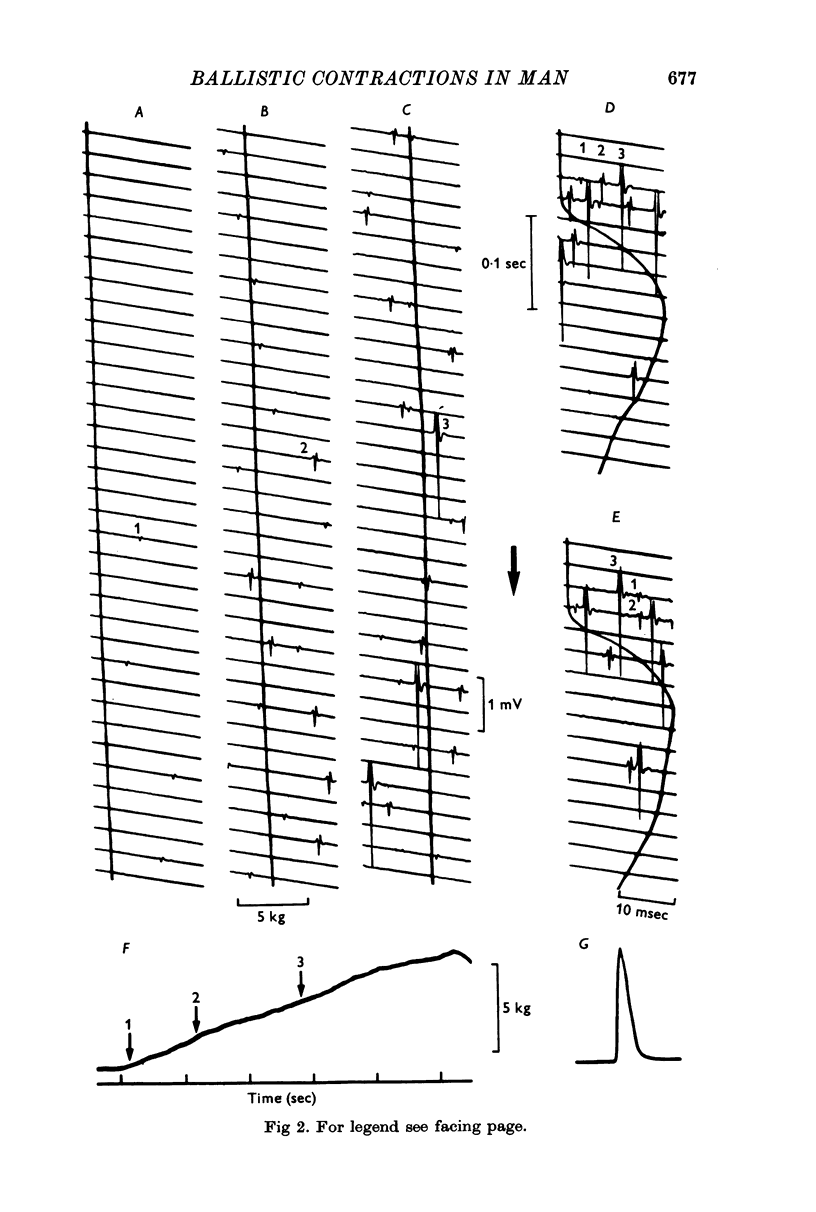
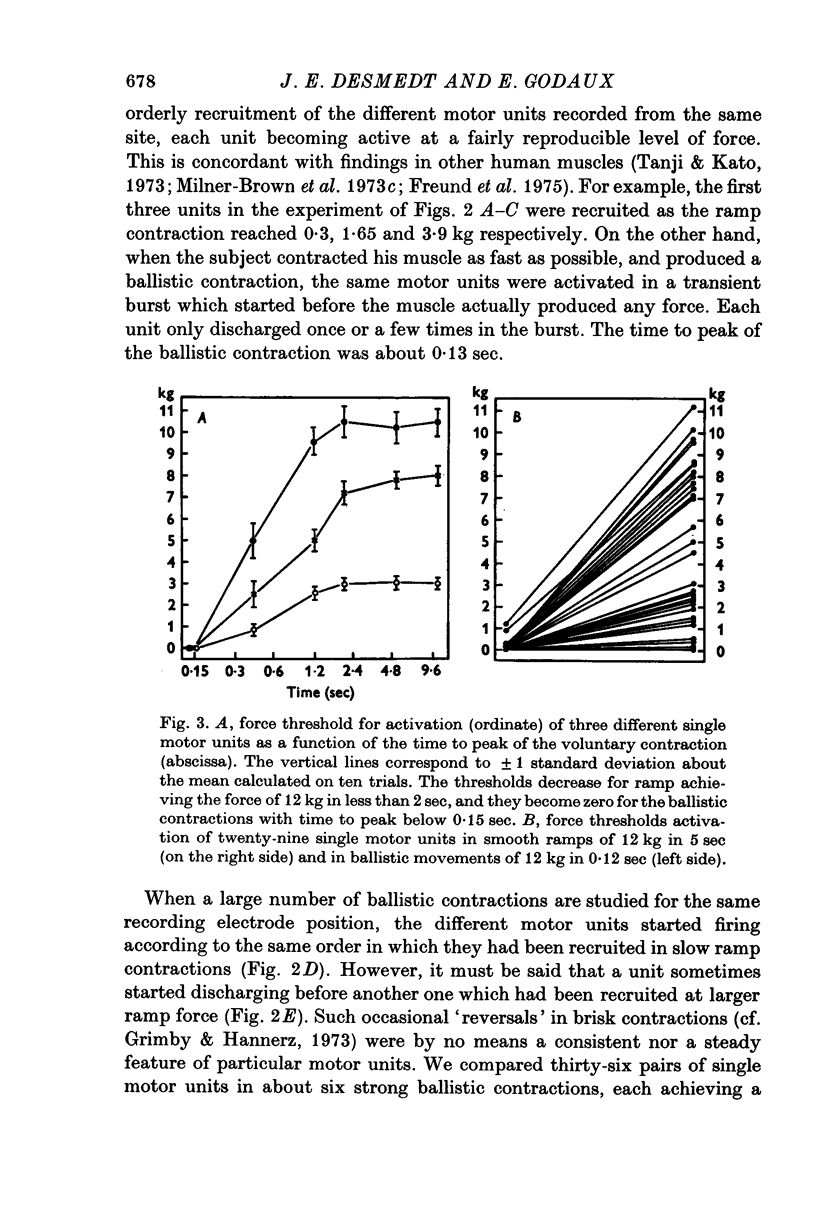
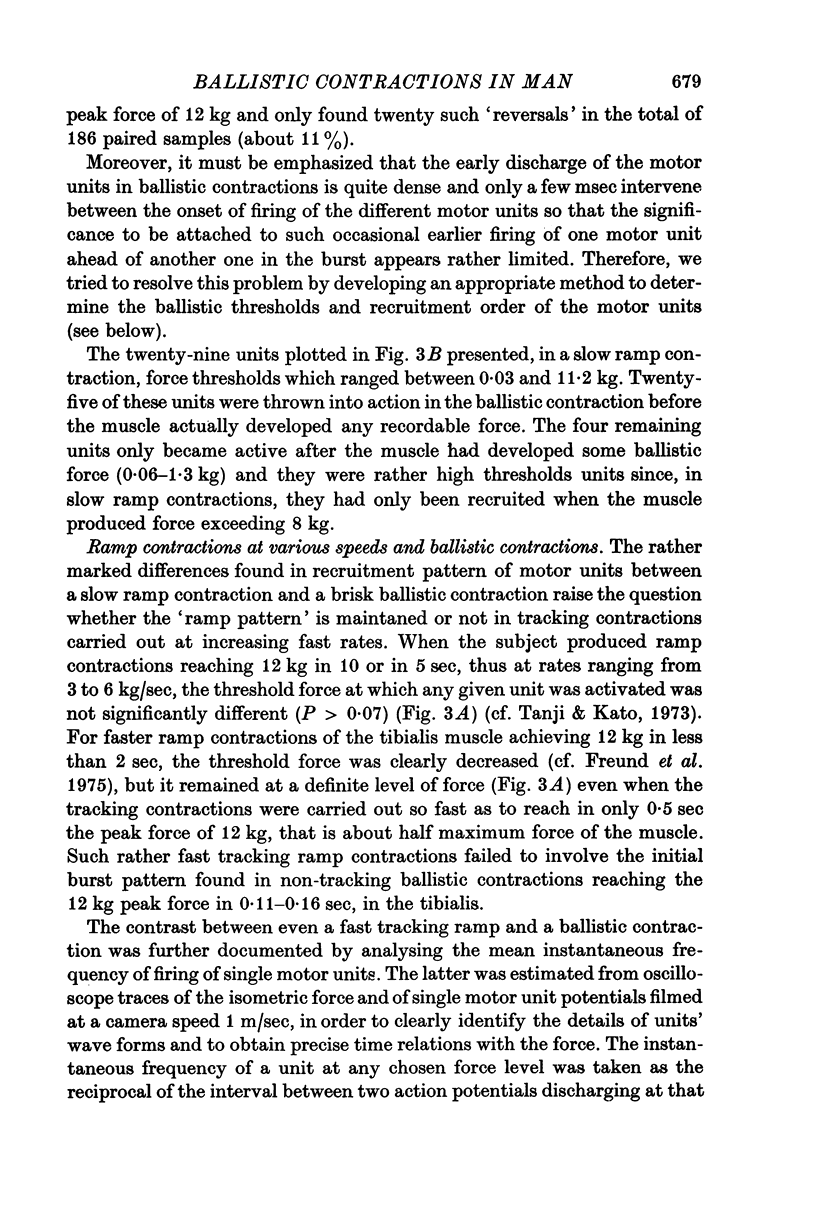
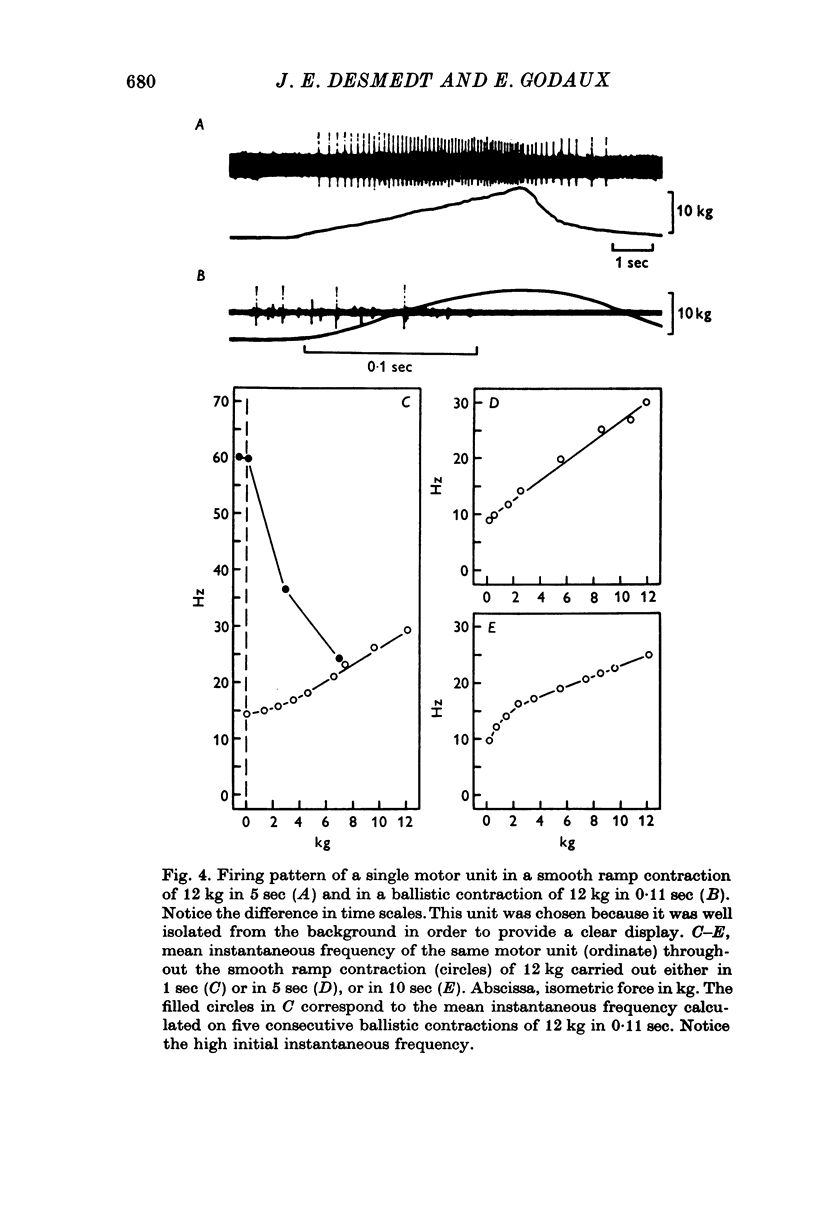
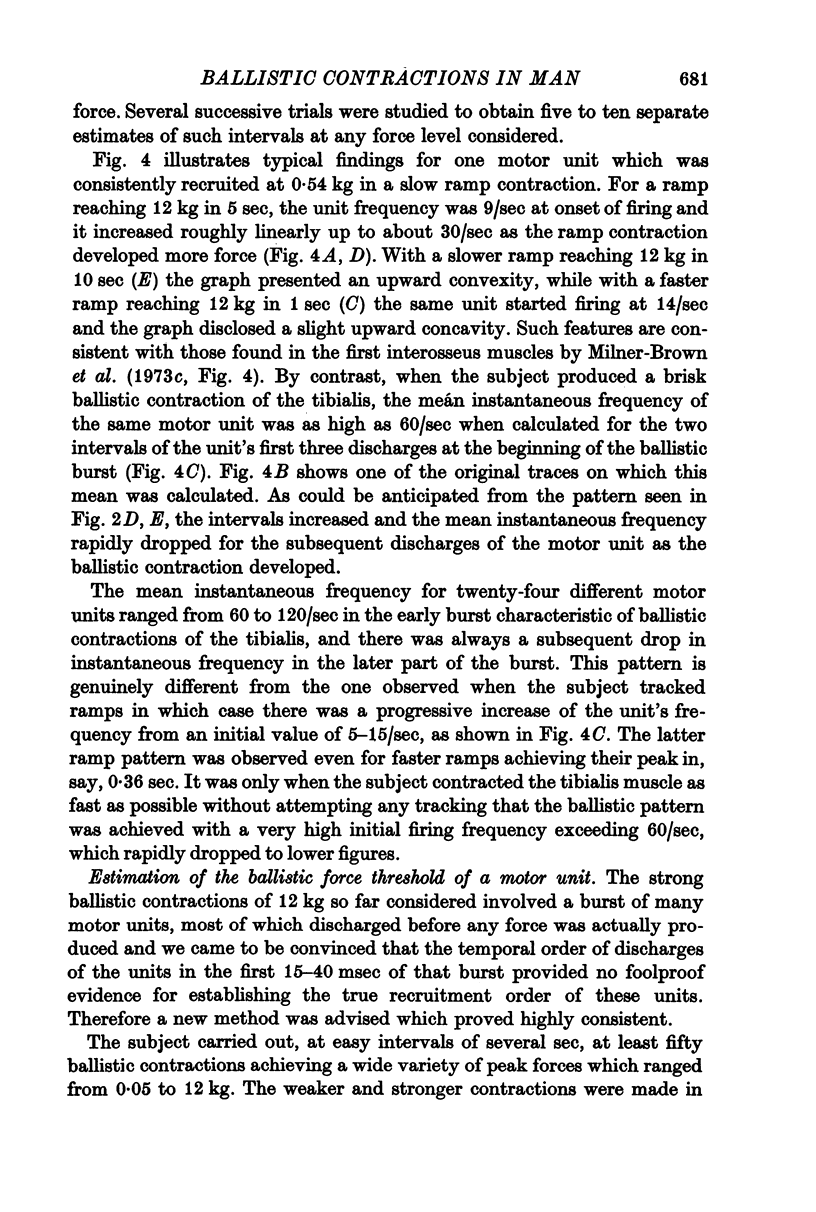
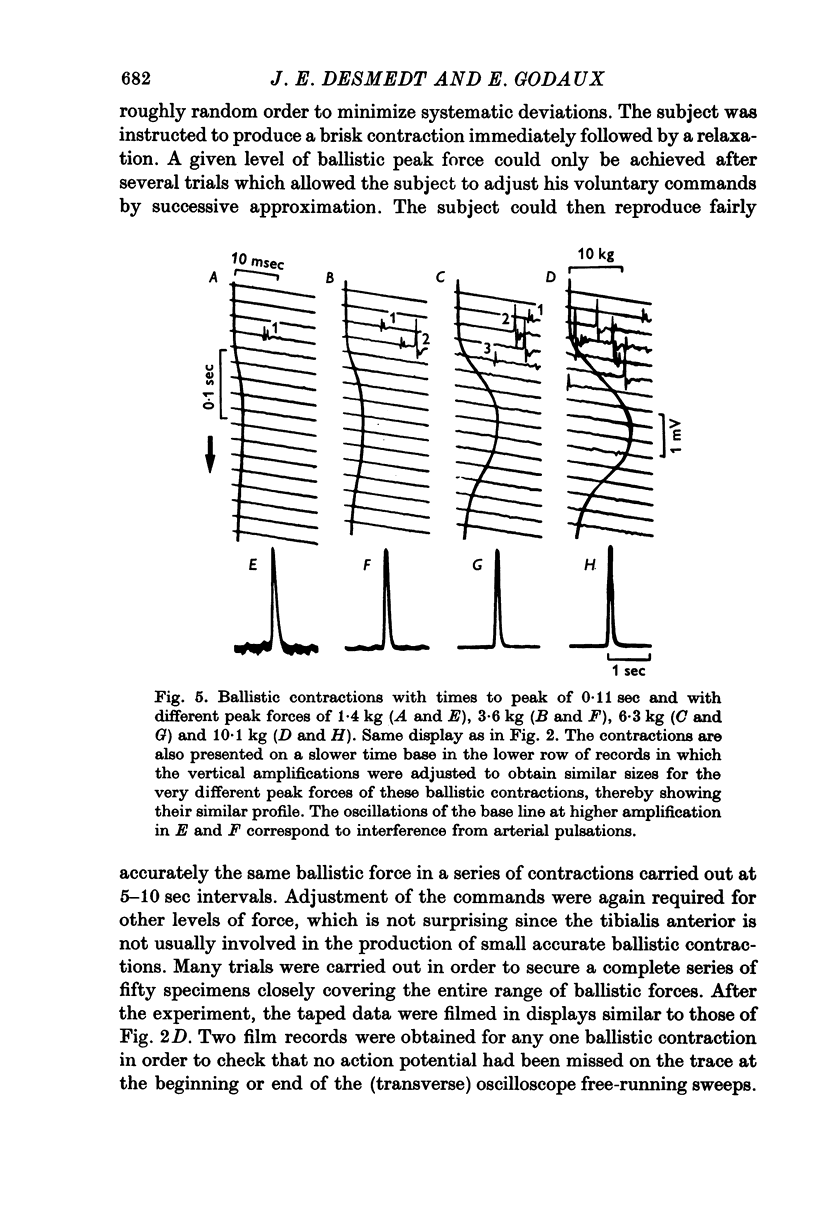
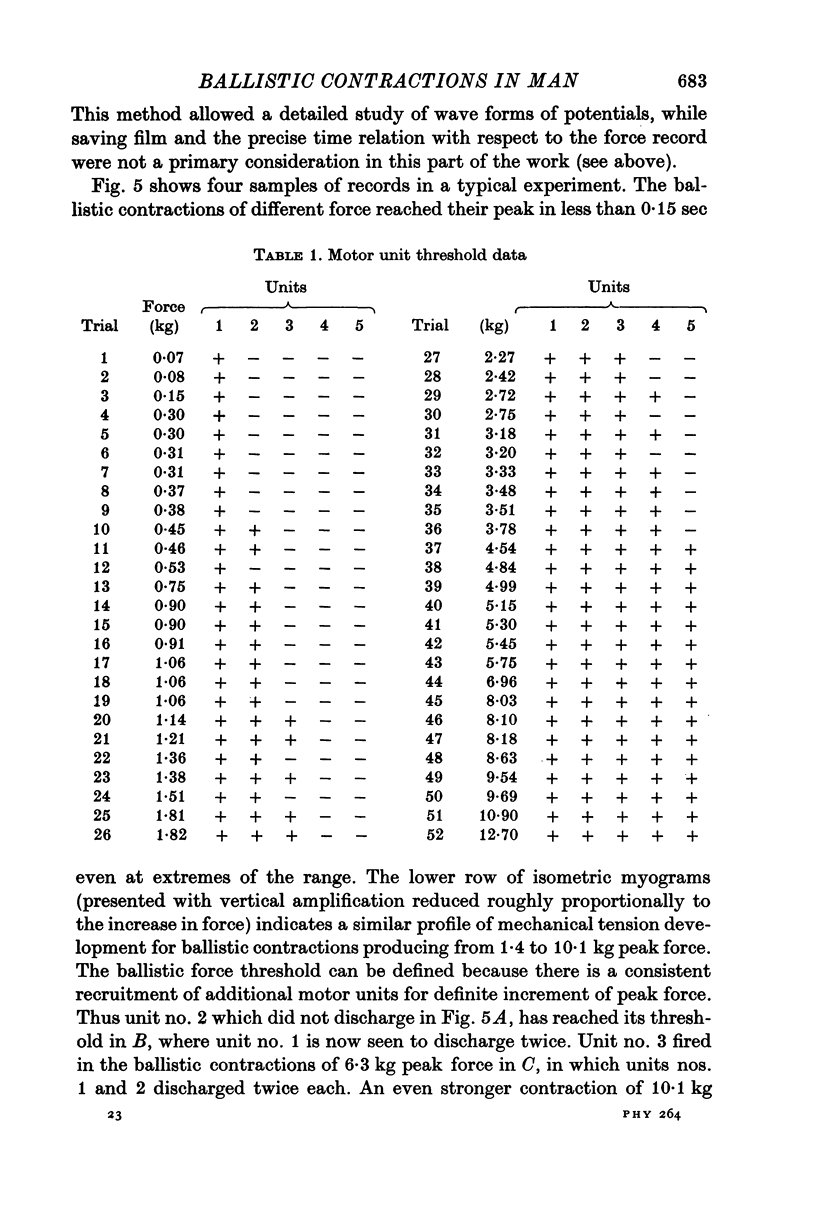

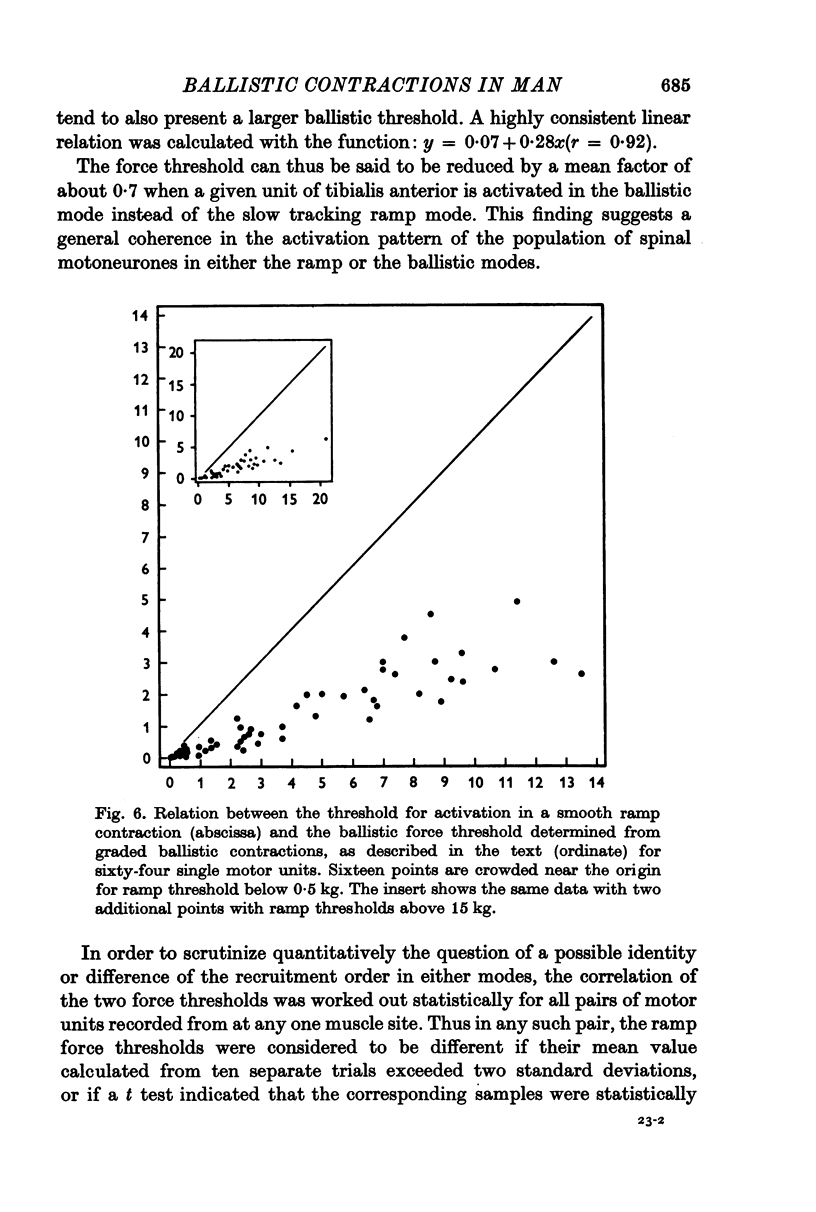

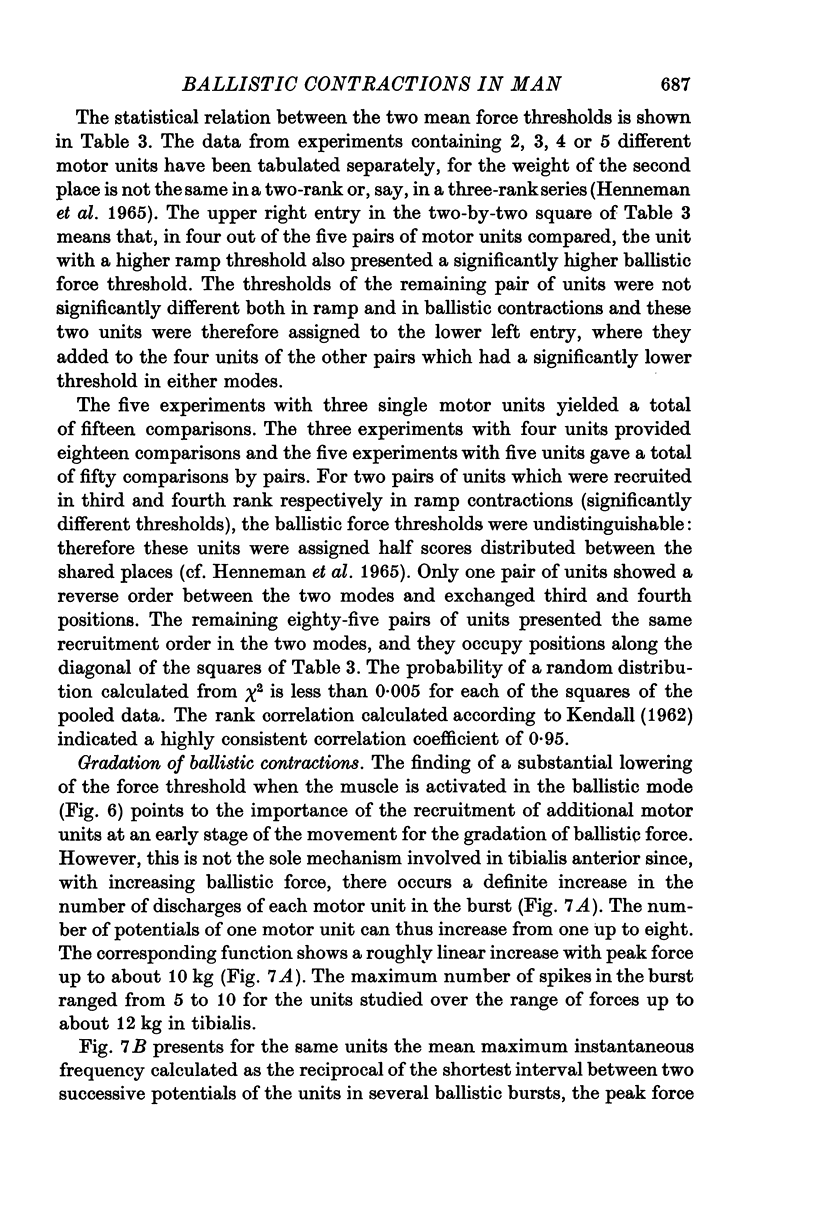
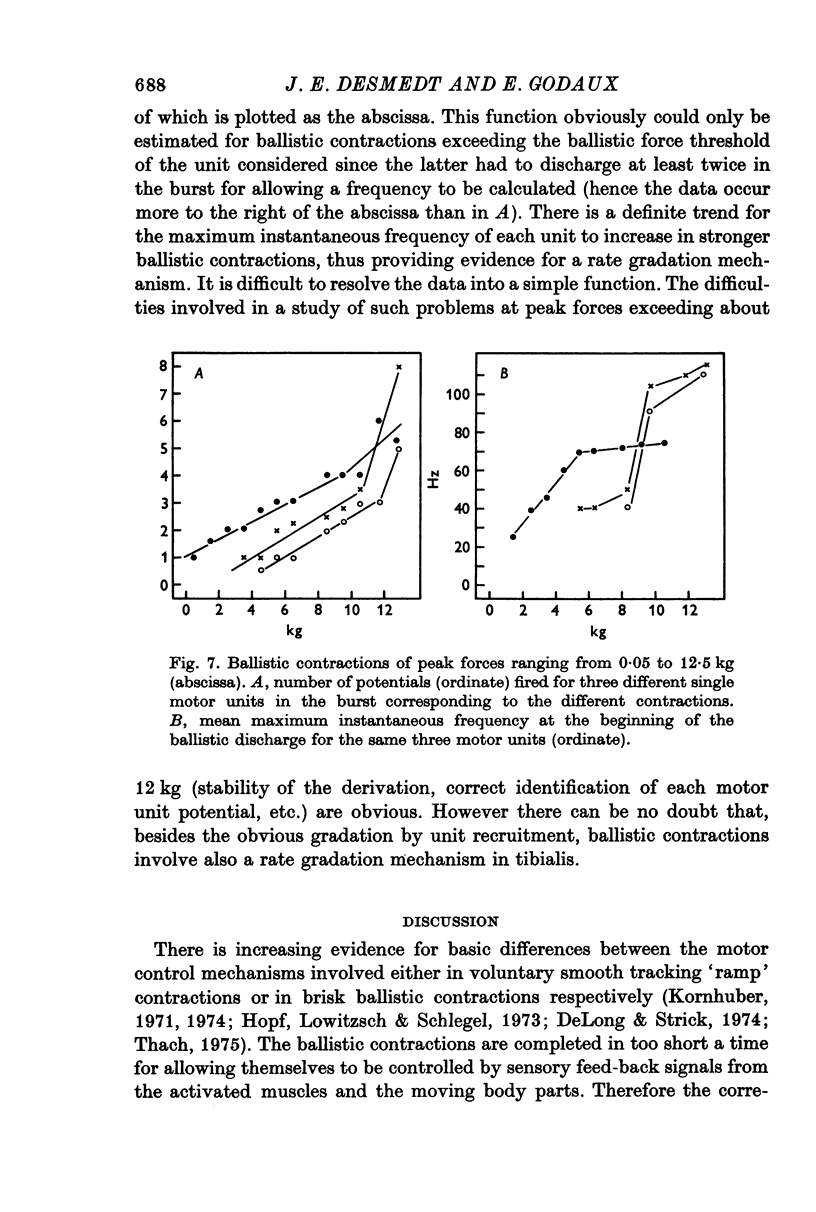

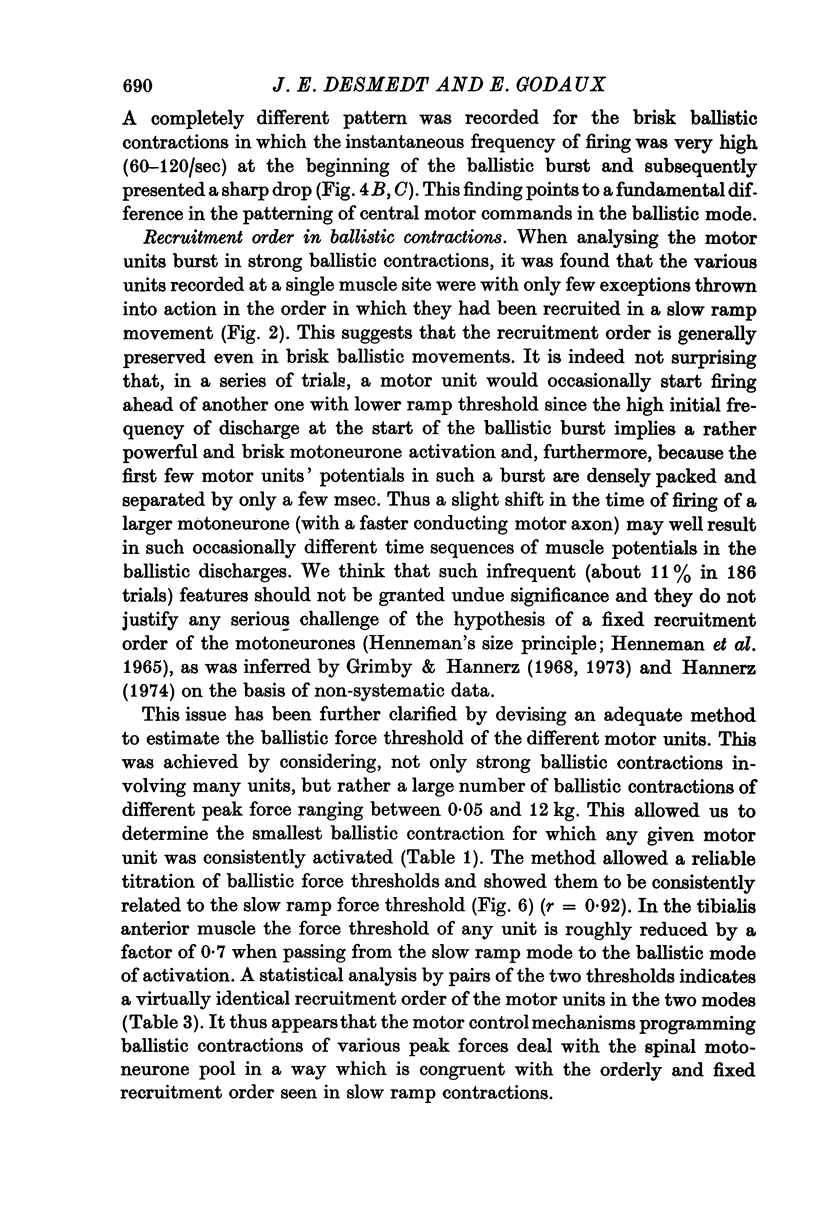

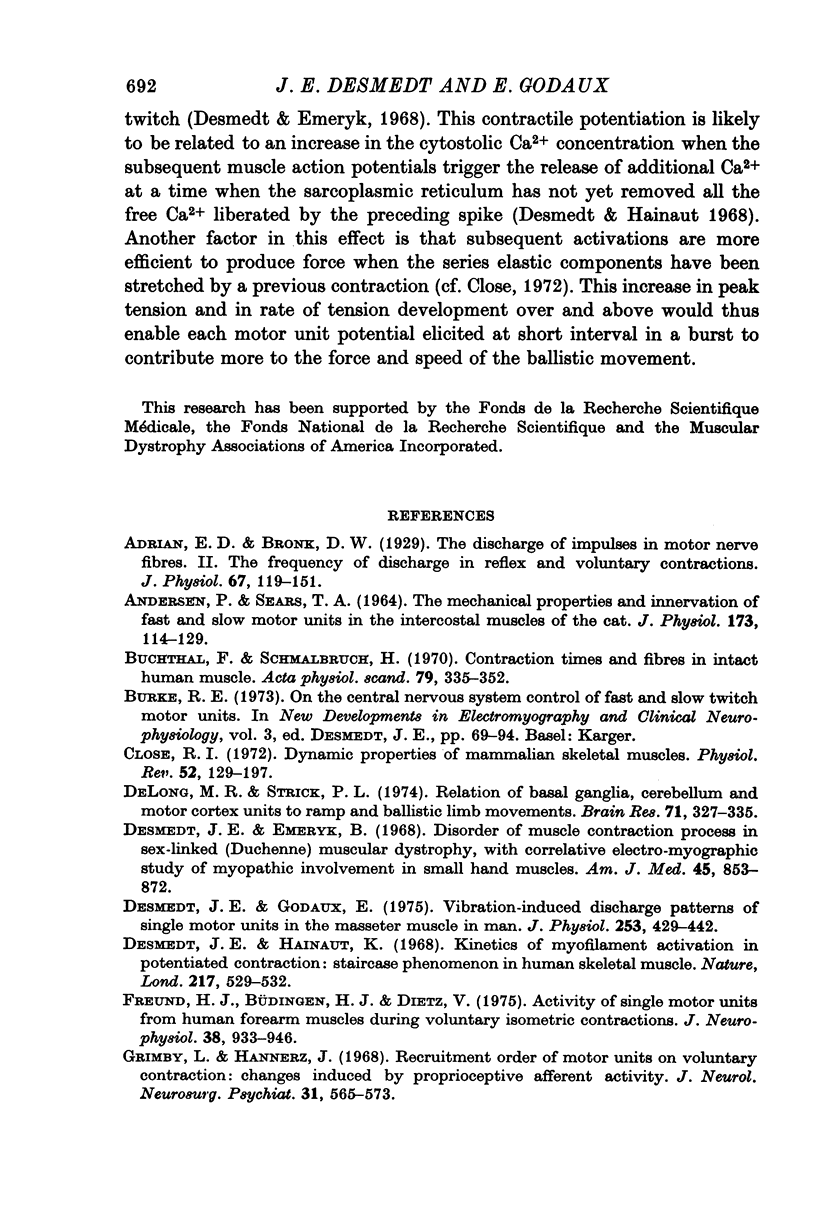
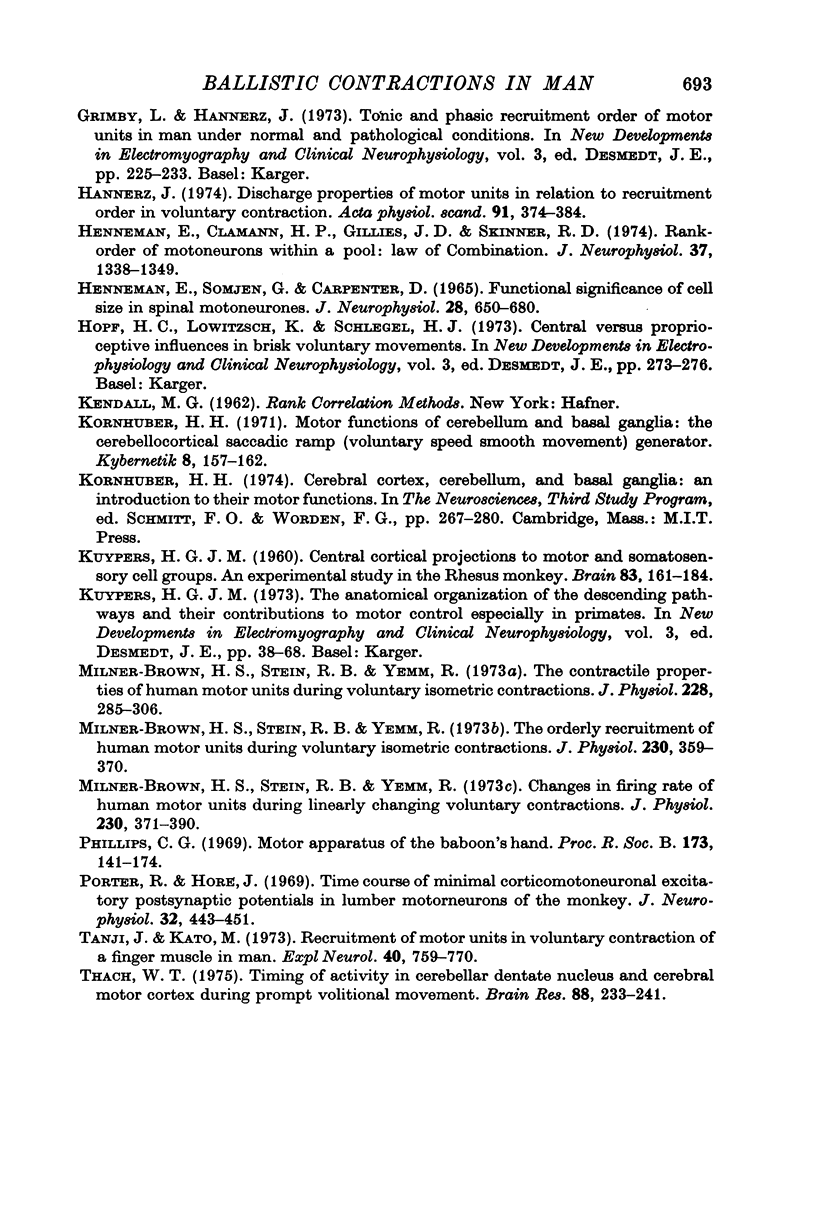
Selected References
These references are in PubMed. This may not be the complete list of references from this article.
- ANDERSEN P., SEARS T. A. THE MECHANICAL PROPERTIES AND INNERVATION OF FAST AND SLOW MOTOR UNITS IN THE INTERCOSTAL MUSCLES OF THE CAT. J Physiol. 1964 Sep;173:114–129. doi: 10.1113/jphysiol.1964.sp007446. [DOI] [PMC free article] [PubMed] [Google Scholar]
- Adrian E. D., Bronk D. W. The discharge of impulses in motor nerve fibres: Part II. The frequency of discharge in reflex and voluntary contractions. J Physiol. 1929 Mar 20;67(2):i3–151. [PMC free article] [PubMed] [Google Scholar]
- Close R. I. Dynamic properties of mammalian skeletal muscles. Physiol Rev. 1972 Jan;52(1):129–197. doi: 10.1152/physrev.1972.52.1.129. [DOI] [PubMed] [Google Scholar]
- DeLong M. R., Strick P. L. Relation of basal ganglia, cerebellum, and motor cortex units to ramp and ballistic limb movements. Brain Res. 1974 May 17;71(2-3):327–335. doi: 10.1016/0006-8993(74)90975-5. [DOI] [PubMed] [Google Scholar]
- Desmedt J. E., Emeryk B. Disorder of muscle contraction processes in sex-linked (Duchenne) muscular dystrophy, with correlative electromyographic study of myopathic involvement in small hand muscles. Am J Med. 1968 Dec;45(6):853–872. doi: 10.1016/0002-9343(68)90184-8. [DOI] [PubMed] [Google Scholar]
- Desmedt J. E., Godaux E. Vibration-induced discharge patterns of single motor units in the masseter muscle in man. J Physiol. 1975 Dec;253(2):429–442. doi: 10.1113/jphysiol.1975.sp011198. [DOI] [PMC free article] [PubMed] [Google Scholar]
- Desmedt J. E., Hainaut K. Kinetics of myofilament activation in potentiated contraction: staircase phenomenon in human skeletal muscle. Nature. 1968 Feb 10;217(5128):529–532. doi: 10.1038/217529a0. [DOI] [PubMed] [Google Scholar]
- Freund H. J., Büdingen H. J., Dietz V. Activity of single motor units from human forearm muscles during voluntary isometric contractions. J Neurophysiol. 1975 Jul;38(4):933–946. doi: 10.1152/jn.1975.38.4.933. [DOI] [PubMed] [Google Scholar]
- Grimby L., Hannerz J. Recruitment order of motor units on voluntary contraction: changes induced by proprioceptive afferent activity. J Neurol Neurosurg Psychiatry. 1968 Dec;31(6):565–573. doi: 10.1136/jnnp.31.6.565. [DOI] [PMC free article] [PubMed] [Google Scholar]
- Hannerz J. Discharge properties of motor units in relation to recruitment order in voluntary contraction. Acta Physiol Scand. 1974 Jul;91(3):374–385. doi: 10.1111/j.1748-1716.1974.tb05692.x. [DOI] [PubMed] [Google Scholar]
- Henneman E., Clamann H. P., Gillies J. D., Skinner R. D. Rank order of motoneurons within a pool: law of combination. J Neurophysiol. 1974 Nov;37(6):1338–1349. doi: 10.1152/jn.1974.37.6.1338. [DOI] [PubMed] [Google Scholar]
- KUYPERS H. G. Central cortical projections to motor and somato-sensory cell groups. An experimental study in the rhesus monkey. Brain. 1960 Mar;83:161–184. doi: 10.1093/brain/83.1.161. [DOI] [PubMed] [Google Scholar]
- Kornhuber H. H. Motor functions of cerebellum and basal ganglia: the cerebellocortical saccadic (ballistic) clock, the cerebellonuclear hold regulator, and the basal ganglia ramp (voluntary speed smooth movement) generator. Kybernetik. 1971 Apr;8(4):157–162. doi: 10.1007/BF00290561. [DOI] [PubMed] [Google Scholar]
- Milner-Brown H. S., Stein R. B., Yemm R. Changes in firing rate of human motor units during linearly changing voluntary contractions. J Physiol. 1973 Apr;230(2):371–390. doi: 10.1113/jphysiol.1973.sp010193. [DOI] [PMC free article] [PubMed] [Google Scholar]
- Milner-Brown H. S., Stein R. B., Yemm R. The contractile properties of human motor units during voluntary isometric contractions. J Physiol. 1973 Jan;228(2):285–306. doi: 10.1113/jphysiol.1973.sp010087. [DOI] [PMC free article] [PubMed] [Google Scholar]
- Milner-Brown H. S., Stein R. B., Yemm R. The orderly recruitment of human motor units during voluntary isometric contractions. J Physiol. 1973 Apr;230(2):359–370. doi: 10.1113/jphysiol.1973.sp010192. [DOI] [PMC free article] [PubMed] [Google Scholar]
- Phillips C. G. The Ferrier lecture, 1968. Motor apparatus of the baboon's hand. Proc R Soc Lond B Biol Sci. 1969 May 20;173(1031):141–174. doi: 10.1098/rspb.1969.0044. [DOI] [PubMed] [Google Scholar]
- Porter R., Hore J. Time course of minimal corticomotoneuronal excitatory postsynaptic potentials in lumbar motoneurons of the monkey. J Neurophysiol. 1969 May;32(3):443–451. doi: 10.1152/jn.1969.32.3.443. [DOI] [PubMed] [Google Scholar]
- Tanji J., Kato M. Recruitment of motor units in voluntary contraction of a finger muscle in man. Exp Neurol. 1973 Sep;40(3):759–770. doi: 10.1016/0014-4886(73)90110-6. [DOI] [PubMed] [Google Scholar]
- Thach W. T. Timing of activity in cerebellar dentate nucleus and cerebral motor cortex during prompt volitional movement. Brain Res. 1975 May 2;88(2):233–241. doi: 10.1016/0006-8993(75)90387-x. [DOI] [PubMed] [Google Scholar]


